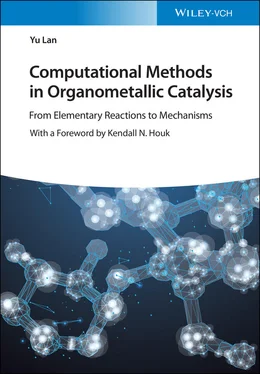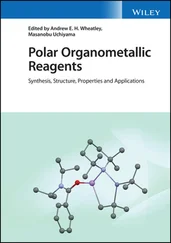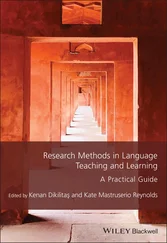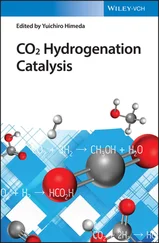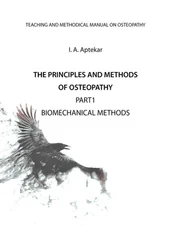Yu Lan - Computational Methods in Organometallic Catalysis
Здесь есть возможность читать онлайн «Yu Lan - Computational Methods in Organometallic Catalysis» — ознакомительный отрывок электронной книги совершенно бесплатно, а после прочтения отрывка купить полную версию. В некоторых случаях можно слушать аудио, скачать через торрент в формате fb2 и присутствует краткое содержание. Жанр: unrecognised, на английском языке. Описание произведения, (предисловие) а так же отзывы посетителей доступны на портале библиотеки ЛибКат.
- Название:Computational Methods in Organometallic Catalysis
- Автор:
- Жанр:
- Год:неизвестен
- ISBN:нет данных
- Рейтинг книги:4 / 5. Голосов: 1
-
Избранное:Добавить в избранное
- Отзывы:
-
Ваша оценка:
- 80
- 1
- 2
- 3
- 4
- 5
Computational Methods in Organometallic Catalysis: краткое содержание, описание и аннотация
Предлагаем к чтению аннотацию, описание, краткое содержание или предисловие (зависит от того, что написал сам автор книги «Computational Methods in Organometallic Catalysis»). Если вы не нашли необходимую информацию о книге — напишите в комментариях, мы постараемся отыскать её.
Computational Methods in Organometallic Catalysis — читать онлайн ознакомительный отрывок
Ниже представлен текст книги, разбитый по страницам. Система сохранения места последней прочитанной страницы, позволяет с удобством читать онлайн бесплатно книгу «Computational Methods in Organometallic Catalysis», без необходимости каждый раз заново искать на чём Вы остановились. Поставьте закладку, и сможете в любой момент перейти на страницу, на которой закончили чтение.
Интервал:
Закладка:
35 35 Nugent, P., Belmabkhout, Y., Burd, S.D. et al. (2013). Porous materials with optimal adsorption thermodynamics and kinetics for CO2 separation. Nature 495: 80–84.
36 36 Cortright, R.D., Davda, R.R., Dumesic, J.A. et al. (2002). Hydrogen from catalytic reforming of biomass‐derived hydrocarbons in liquid water. Nature 418: 964–967.
37 37 Hu, B., Wang, K., and Wu, L. (2010). Engineering carbon materials from the hydrothermal carbonization process of biomass. Advanced Materials 22: 813–828.
38 38 Hirst, A.R., Escuder, B., Miravet, J.F. et al. (2008). High‐tech applications of self‐assembling supramolecular nanostructured gel‐phase materials: from regenerative medicine to electronic devices. Angewandte Chemie International Edition 47: 8002–8018.
39 39 Li, L., Wu, G., Yang, G. et al. (2013). Focusing on luminescent graphene quantum dots: current status and future perspectives. Nanoscale 5: 4015–4039.
40 40 Katz, H.E., Bao, Z., Gilat, S. et al. (2001). Synthetic chemistry for ultrapure, processable, and high‐mobility organic transistor semiconductors. Accounts of Chemical Research 34: 359–369.
41 41 Pron, A. and Rannou, P. (2002). Processible conjugated polymers: from organic semiconductors to organic metals and superconductors. Progress in Polymer Science 27: 135–190.
42 42 Furukawa, H., Cordova, K.E., O'Keeffe, M. et al. (2013). The chemistry and applications of metal–organic frameworks. Science 341: 974.
43 43 Burke, M.D. and Schreiber, S.L. (2004). A planning strategy for diversity‐oriented synthesis. Angewandte Chemie International Edition 43: 46–58.
44 44 Jiang, H., Taranekar, P., Reynolds, J.R. et al. (2009). Conjugated polyelectrolytes: synthesis, photophysics, and applications. Angewandte Chemie International Edition 48: 4300–4316.
45 45 Salonen, M.S.L.M., Ellermann, M., Diederich, F. et al. (2011). Aromatic rings in chemical and biological recognition: energetics and structures. Angewandte Chemie International Edition 50: 4808–4842.
46 46 Khodagholy, D., Rivnay, J., Sessolo, M. et al. (2013). High transconductance organic electrochemical transistors. Nature Communication 2013 (4): 2133.
47 47 Yu, J., Shi, F., Gong, L.Z. et al. (2011). Bronsted‐acid‐catalyzed asymmetric multicomponent reactions for the facile synthesis of highly enantioenriched structurally diverse nitrogenous heterocycles. Accounts of Chemical Research 2011 (44): 1156–1171.
48 48 Moonen, K., Laureyn, I., Stevens, C.V. et al. (2014). Synthetic methods for azaheterocyclic phosphonates and their biological activity. Chemical Reviews 104: 6177–6215.
49 49 Bartoli, G., Bencivennia, G., Dalpozzob, R. et al. (2010). Organocatalytic strategies for the asymmetric functionalization of indoles. Chemical Society Reviews 39: 4449–4465.
50 50 Qin, Y., Zhu, L., Luo, S. et al. (2017). Organocatalysis in inert C—H bond functionalization. Chemical Reviews 107: 9433–9520.
51 51 Shi, W., Liu, C., Lei, A. et al. (2011). Transition‐metal catalyzed oxidative cross‐coupling reactions to form C—C bonds involving organometallic reagents as nucleophiles. Chemical Society Reviews 2011 (40): 2761.
52 52 Liu, C., Zhang, H., Shi, W. et al. (2011). Bond formations between two nucleophiles: transition metal catalyzed oxidative cross‐coupling reactions. Chemical Reviews 2011 (111): 1780.
53 53 Lei, A., Shi, W., Liu, C. et al. (2016). Oxidative Cross‐Coupling Reactions. Wiley‐VCH.
54 54 Twilton, J., Le, C., Zhang, P. et al. (2017). The merger of transition metal and photocatalysis. Nature Reviews Chemistry 1: 0052.
55 55 Mayer, J.M. (2011). Understanding hydrogen atom transfer: from bond strengths to Marcus theory. Accounts of Chemical Research 44: 36–46.
56 56 Soleilhavoup, M. and Bertrand, G. (2015). Cyclic (alkyl)(amino)carbenes (CAACs): stable carbenes on the rise. Accounts of Chemical Research 48: 256–266.
57 57 Tellis, J.C., Kelly, C.B., and Primer, D.N. (2016). Single‐electron transmetalation via photoredox/nickel dual catalysis: unlocking a new paradigm for sp3–sp2 cross‐coupling. Accounts of Chemical Research 49 (7): 1429–1439.
58 58 Houk, K.N. (1975). Frontier molecular‐orbital theory of cycloaddition reactions. Accounts of Chemical Research 8: 361–369.
59 59 Mcleod, D., Thogersen, M.K., Jessen, N.I. et al. (2019). Expanding the frontiers of higher‐order cycloadditions. Accounts of Chemical Research 52: 3488–3501.
60 60 Li, J., Liu, T., Chen, Y. et al. (2012). Aminocatalytic asymmetric Diels–Alder reactions via HOMO activation. Accounts of Chemical Research 45 (9): 1491–1500.
61 61 Afewerki, S. and Cordova, A. (2016). Combinations of aminocatalysts and metal catalysts: a powerful cooperative approach in selective organic synthesis. Chemical Reviews 116 (22): 13512–13570.
62 62 Zeise, W.C. (1831). Von der Wirkung zwischen Platinchlorid und Alkohol, und von den dabei entstehenden neuen Substanzen. Annual Physical Chemistry (in German) 97 (4): 497–541.
63 63 Didier, A. (2007). History of organometallic chemistry. In: Organometallic Chemistry and Catalysis, 5–20. Springer‐Verlag Berlin Heidelberg.
64 64 Frankland, E. (1849). Notiz über eine neue Reihe organischer Körper, welche Metalle, Phosphor u. s. w. enthalten. Liebigs Annalen der Chemie und Pharmacie 71 (2): 213–216.
65 65 Löwig, C. (1853). Ueber Methplumbäthyl. Annalen der Chemie und Pharmacie 88: 318–322.
66 66 Hallwachs, W. and Schafarik, A. (1859). Ueber die Verbindungen der Erdmetalle mit organischen Radicalen. Liebigs Annalen der Chemie und Pharmacie 109: 207.
67 67 Grignard, V. (1900). Sur quelques nouvelles combinaisons organométalliques du magnèsium et leur application à des synthèses d'alcools et d'hydrocarbures. Comptes Rendus 130: 1322.
68 68 Frankland, E. (1859). Researches on Organo‐metallic Bodies. Philosophical Transactions of the Royal Society of London 149: 401–415.
69 69 Mond, L., Langer, C., and Quincke, F. (1890). Action of carbon monoxide on nickel. Journal of the Chemical Society, Faraday Transactions 57: 749–753.
70 70 Mond, L. and Langer, C. (1891). On iron carbonyls. Journal of the Chemical Society, Faraday Transactions 59: 1090–1093.
71 71 Werner, A. (1893). Beitrag zur Konstitution anorganischer Verbindungen. Anorganic Chemistry 3: 267.
72 72 Hein, F. (1919). Notiz über Chromorganoverbindungen. Chemische Berichte 52: 195.
73 73 Kealy, T.J. and Pauson, P.L. (1951). A new type of organo‐iron compound. Nature 168 (4285): 1039–1040.
74 74 Fischer, E.O. and Maasböl, A. (1964). On the existence of a tungsten carbonyl carbene complex. Angewandte Chemie (International Edition in English) 3 (8): 580–581.
75 75 Ziegler, K., Holzkamp, E., Breil, H. et al. (1955). Das Mülheimer Normaldruck‐Polyäthylen‐Verfahren. Angewandte Chemie (International Edition in English) 67: 541–547.
76 76 Natta, G. (1955). Une nouvelle classe de polymeres d'α‐olefines ayant une régularité de structure exceptionnelle. Journal of Polymer Science 16 (82): 143–154.
77 77 Smidt, J. and Hafner, W. (1959). Eine Reaktion von Palladiumchlorid mit Allylalkohol. Angewandte Chemie (International Edition in English) 71: 284.
78 78 Ruddick, J.D. and Shaw, B.L. (1969). Transition metal–carbon bonds. Part XXI. Methyl derivatives of platinum(II) and platinum(IV) containing dimethylphenylarsine as ligand. Journal of the American Chemical Society 123 (13): 2964–2969.
79 79 Wilkinson, G. (1974). The long search for stable transition metal alkyls. Science 185: 109–112.
80 80 Heck, R.F. and Nolley, J.P. (1972). Palladium‐catalyzed vinylic hydrogen substitution reactions with aryl, benzyl, and styryl halides. The Journal of Organic Chemistry 37 (14): 2320–2322.
81 81 Tamao, K., Sumitani, K., and Kumada, M. (1972). Selective carbon–carbon bond formation by cross‐coupling of Grignard reagents with organic halides. Catalysis by nickel–phosphine complexes. Journal of the American Chemical Society 94 (12): 4374–4376.
Читать дальшеИнтервал:
Закладка:
Похожие книги на «Computational Methods in Organometallic Catalysis»
Представляем Вашему вниманию похожие книги на «Computational Methods in Organometallic Catalysis» списком для выбора. Мы отобрали схожую по названию и смыслу литературу в надежде предоставить читателям больше вариантов отыскать новые, интересные, ещё непрочитанные произведения.
Обсуждение, отзывы о книге «Computational Methods in Organometallic Catalysis» и просто собственные мнения читателей. Оставьте ваши комментарии, напишите, что Вы думаете о произведении, его смысле или главных героях. Укажите что конкретно понравилось, а что нет, и почему Вы так считаете.
